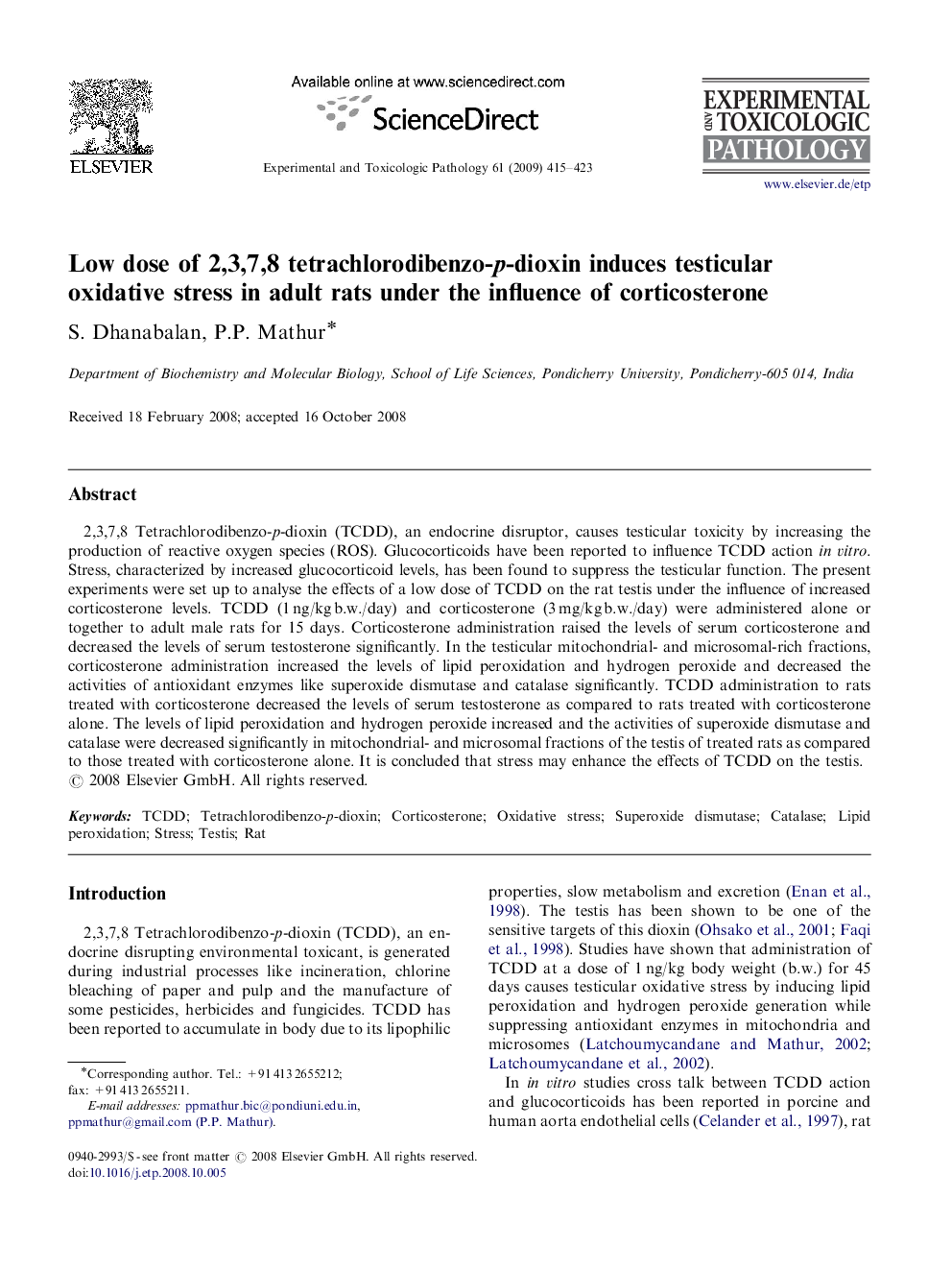| Article ID | Journal | Published Year | Pages | File Type |
|---|---|---|---|---|
| 2499646 | Experimental and Toxicologic Pathology | 2009 | 9 Pages |
2,3,7,8 Tetrachlorodibenzo-p-dioxin (TCDD), an endocrine disruptor, causes testicular toxicity by increasing the production of reactive oxygen species (ROS). Glucocorticoids have been reported to influence TCDD action in vitro. Stress, characterized by increased glucocorticoid levels, has been found to suppress the testicular function. The present experiments were set up to analyse the effects of a low dose of TCDD on the rat testis under the influence of increased corticosterone levels. TCDD (1 ng/kg b.w./day) and corticosterone (3 mg/kg b.w./day) were administered alone or together to adult male rats for 15 days. Corticosterone administration raised the levels of serum corticosterone and decreased the levels of serum testosterone significantly. In the testicular mitochondrial- and microsomal-rich fractions, corticosterone administration increased the levels of lipid peroxidation and hydrogen peroxide and decreased the activities of antioxidant enzymes like superoxide dismutase and catalase significantly. TCDD administration to rats treated with corticosterone decreased the levels of serum testosterone as compared to rats treated with corticosterone alone. The levels of lipid peroxidation and hydrogen peroxide increased and the activities of superoxide dismutase and catalase were decreased significantly in mitochondrial- and microsomal fractions of the testis of treated rats as compared to those treated with corticosterone alone. It is concluded that stress may enhance the effects of TCDD on the testis.
